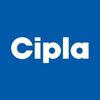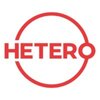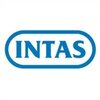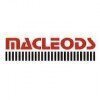
i
Zydus
Lifesciences
Filter interviews by
Zydus Lifesciences Interview Questions and Answers
156 Interview questions
HR plays a crucial role in managing an organization's workforce, ensuring effective recruitment, development, and employee relations.
Recruitment and Selection: HR identifies staffing needs and conducts interviews to find the right candidates, e.g., using behavioral interviews.
Training and Development: HR organizes training programs to enhance employee skills, such as leadership workshops for managers.
Performance M...
Implementing flexible schedules and wellness programs can significantly enhance work-life balance for employees.
Introduce flexible working hours to accommodate personal commitments, such as school runs or medical appointments.
Encourage remote work options, allowing employees to work from home when needed, which can reduce commute stress.
Implement wellness programs that include mental health days, fitness classes, ...
Minimizing downtime involves proactive maintenance, efficient training, and real-time monitoring to ensure smooth operations.
Implement preventive maintenance schedules to address equipment issues before they cause breakdowns. For example, regular inspections of machinery.
Utilize real-time monitoring systems to track performance and identify potential failures early. For instance, using IoT sensors on production li...
The investigation process involves systematic steps to gather facts, analyze data, and draw conclusions for informed decision-making.
Define the objective: Clearly outline what you are investigating, e.g., a workplace incident.
Gather information: Collect relevant data through interviews, documents, and observations.
Analyze evidence: Examine the collected data to identify patterns or discrepancies.
Draw conclusions: ...
Compressors are devices that increase the pressure of gases by reducing their volume, used in various applications.
Positive Displacement Compressors: These compress gas by trapping a fixed volume and forcing it into a smaller space. Example: Reciprocating compressors.
Dynamic Compressors: These use high-speed rotating blades to impart velocity to the gas, converting it to pressure. Example: Centrifugal compressors.
...
Quality assurance ensures products/services meet defined standards and customer expectations through systematic processes.
Involves systematic monitoring and evaluation of various aspects of a project or service.
Focuses on preventing defects and ensuring quality in processes, not just final products.
Examples include software testing, manufacturing inspections, and compliance audits.
Utilizes methodologies like Six S...
Exploratory testing is an informal testing approach focused on discovering defects through exploration and learning.
Emphasizes tester's intuition and experience over formal test cases.
Allows for simultaneous test design and execution, adapting to findings.
Useful for uncovering unexpected issues in complex systems.
Example: Testing a new feature without predefined scripts to see how it behaves under various conditio...
Effective IT infrastructure management ensures reliability, security, and efficiency in technology operations.
Implement regular monitoring and maintenance to identify issues early, such as using tools like Nagios or Zabbix.
Establish a robust backup and disaster recovery plan, ensuring data integrity and availability, e.g., using cloud solutions like AWS Backup.
Utilize automation for routine tasks to reduce human e...
Effective data center management and cybersecurity ensure operational efficiency and protect sensitive information from threats.
Implement robust physical security measures, such as biometric access controls and surveillance systems.
Regularly update and patch software to protect against vulnerabilities; for example, schedule monthly updates for all systems.
Utilize virtualization to optimize resource usage and impro...
Analytical method transfer by GC ensures consistency and reliability in testing across different laboratories.
Define the method: Establish the GC method parameters, including temperature, flow rate, and detector settings.
Select appropriate standards: Use reference standards to validate the method's accuracy and precision.
Conduct a validation study: Perform side-by-side comparisons of results from the transferring ...
Zydus Lifesciences Interview Experiences
362 interviews found
Executive Quality Assurance Interview Questions & Answers
posted on 10 Feb 2025
I appeared for an interview in Jan 2025.
(2 Questions)
- Q1. How much your package without taking interview direct ask about package and said we can't give you more than 20% after, if you agree with that then we can arrange interview
- Q2. You have to working on weekly off because production activity running but the same thing never apply for them but they mentally torched to you for coming in holiday like republic day, independence day, Diw...
(3 Questions)
- Q1. You have to come in any shifts
- Q2. Why you leave current organization
- Ans.
Seeking new challenges and growth opportunities
Desire for career advancement
Looking for new challenges
Seeking better work-life balance
Company restructuring or downsizing
Relocation to a new area
- Q3. Not a single time they give opportunity to expand your knowledge if you only eligible but they select only person who hear them & do the work as they want not using their mind
Interview Preparation Tips
They only cover that policy which was beneficial for them but not a single policy from employees cover from zudus
I appeared for an interview in Dec 2024, where I was asked the following questions.
- Q1. What can you tell me about the product?
- Q2. What types of troubleshooting methods are commonly used?
- Q3. What is the function of a machine?
- Q4. What are the material properties of the product?
- Q5. How many parts of machine?
Interview Preparation Tips
(1 Question)
- Q1. Basic questions for your job regarding by HR representative
(1 Question)
- Q1. Personal basic details questions
(1 Question)
- Q1. Basic personal details, job regarding questions, situation based questions, case study questions
(2 Questions)
- Q1. Confidential and hnt science
- Q2. Confidential
(2 Questions)
- Q1. Good doctor good doctor
- Q2. Confidential
Interview Preparation Tips
I appeared for an interview in Jan 2025.
(2 Questions)
- Q1. What about zydus?
- Q2. Why you job in zydus lifesciences ltd
(1 Question)
- Q1. How was experience in first job interview?
- Ans.
My first job interview experience was nerve-wracking but ultimately rewarding.
I prepared by researching the company and practicing common interview questions.
I arrived early to the interview to show punctuality and professionalism.
I dressed professionally and maintained good eye contact throughout the interview.
I asked thoughtful questions about the company and the role to show my interest.
I sent a thank-you email afte...
(2 Questions)
- Q1. Technical Work not possible in the Zydus totally bypass work and find you in work time then made Data integrity case and immediately terminate .
- Q2. Very Bad action HR on the spot terminate
I appeared for an interview before Jun 2024, where I was asked the following questions.
- Q1. Case studies based on scenerios
- Q2. Past experience
I appeared for an interview in Dec 2024.
(2 Questions)
- Q1. Autoclave machine operate
- Q2. Pharmaceuticals industry
Interview Preparation Tips
I applied via Walk-in
(2 Questions)
- Q1. All IPQA activities with cGMP Norms
- Ans.
IPQA activities refer to In-Process Quality Assurance activities that ensure compliance with cGMP norms.
IPQA activities involve monitoring and inspecting the manufacturing process to ensure quality standards are met
Examples of IPQA activities include in-process checks, sampling, and documentation review
IPQA activities are essential for maintaining product quality and compliance with cGMP norms
- Q2. Data integrity,and QMS.
Reasoning ,English,maths,gk.
(1 Question)
- Q1. Stability ,salary
Interview Preparation Tips
- IPQA
- QMS
I applied via Company Website and was interviewed in Sep 2024. There were 2 interview rounds.
(3 Questions)
- Q1. Machine cleaning. knowledge
- Q2. Machine process knowledge
- Q3. As pr sop knowledge
(2 Questions)
- Q1. Education knowledge
- Q2. Salary discuss And joining
Top trending discussions






Zydus Lifesciences Interview FAQs
Some of the top questions asked at the Zydus Lifesciences interview -
The duration of Zydus Lifesciences interview process can vary, but typically it takes about less than 2 weeks to complete.
Tell us how to improve this page.
Zydus Lifesciences Interviews By Designations
- Zydus Lifesciences Plant Operator Interview Questions
- Zydus Lifesciences Executive Interview Questions
- Zydus Lifesciences Assistant Manager Interview Questions
- Zydus Lifesciences Medical Representative Interview Questions
- Zydus Lifesciences Technical Assistant Interview Questions
- Zydus Lifesciences Officer Interview Questions
- Zydus Lifesciences Senior Executive Interview Questions
- Zydus Lifesciences Production Officer Interview Questions
- Show more
Interview Questions for Popular Designations
Overall Interview Experience Rating
based on 414 interview experiences
Difficulty level
Duration
Interview Questions from Similar Companies
Zydus Lifesciences Reviews and Ratings
based on 6.4k reviews
Rating in categories
|
Senior Executive
1.9k
salaries
| ₹2 L/yr - ₹12.1 L/yr |
|
Assistant Manager
1.8k
salaries
| ₹5.5 L/yr - ₹18.2 L/yr |
|
Executive
1.3k
salaries
| ₹2.4 L/yr - ₹9.2 L/yr |
|
Deputy Manager
958
salaries
| ₹6.4 L/yr - ₹20.5 L/yr |
|
Officer
836
salaries
| ₹1.2 L/yr - ₹6.2 L/yr |

Cipla

Dr. Reddy's

Lupin

Sun Pharmaceutical Industries
- Home >
- Interviews >
- Zydus Lifesciences Interview Questions












